Non-toxic plants at a glance
|
Saintpaulia

- About: A small, easy to care for flowering plant with 6-20 species native to native to Tanzania southeastern Kenya in eastern tropical Africa.
- Scientific name: Saintpaulia spp.
- Common names: African violet
- Care: Moderate to bright indirect light. Water when the soil is dry, allow to dry out between watering.
Orchidaceae
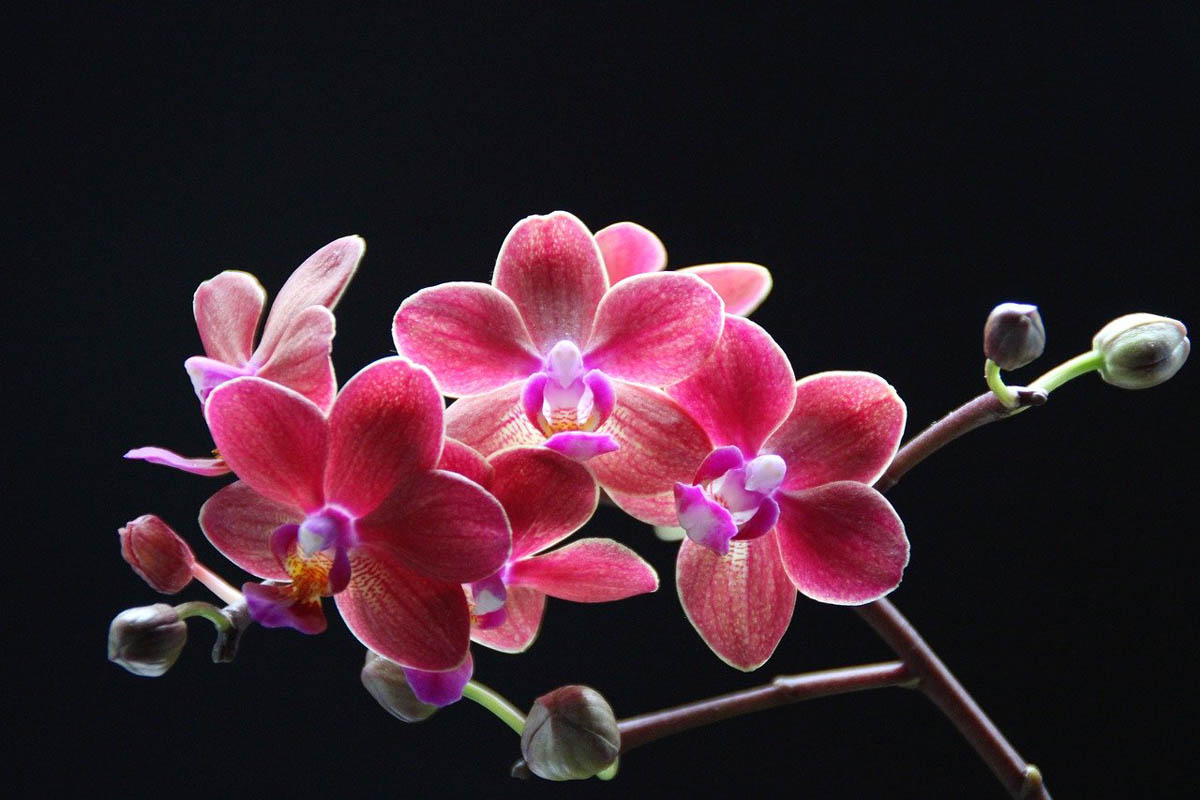
- About: With between 20,000 and 30,000 varieties of orchid, you are spoiled for choice. Orchids come in almost every colour imaginable; some are highly fragrant others have no scent. These hardy flowers make great indoor pot plants, or grown outdoors and bring the pot inside when in flower.
- Scientific name: Orchidaceae spp.
- Common names: Orchid
- Care: Strong, indirect light, high humidity, avoid drafts. The orchid likes a lot of water, but allow the pot to dry out between watering. Avoid splashing water on the leaves.
Hypoestes

- About: A flowering plant with approximately 150 species which are popular for their patterned leaves. They originate from Madagascar.
- Scientific name: Hypoestes spp.
- Other names: Baby’s tears, polkadot plant
- Care: The ideal location is indirect bright light, keep the soil moist during the active growing period in summer, but reduce once temperatures cool. Prune the plant to avoid legginess.
Fittonia albivenis
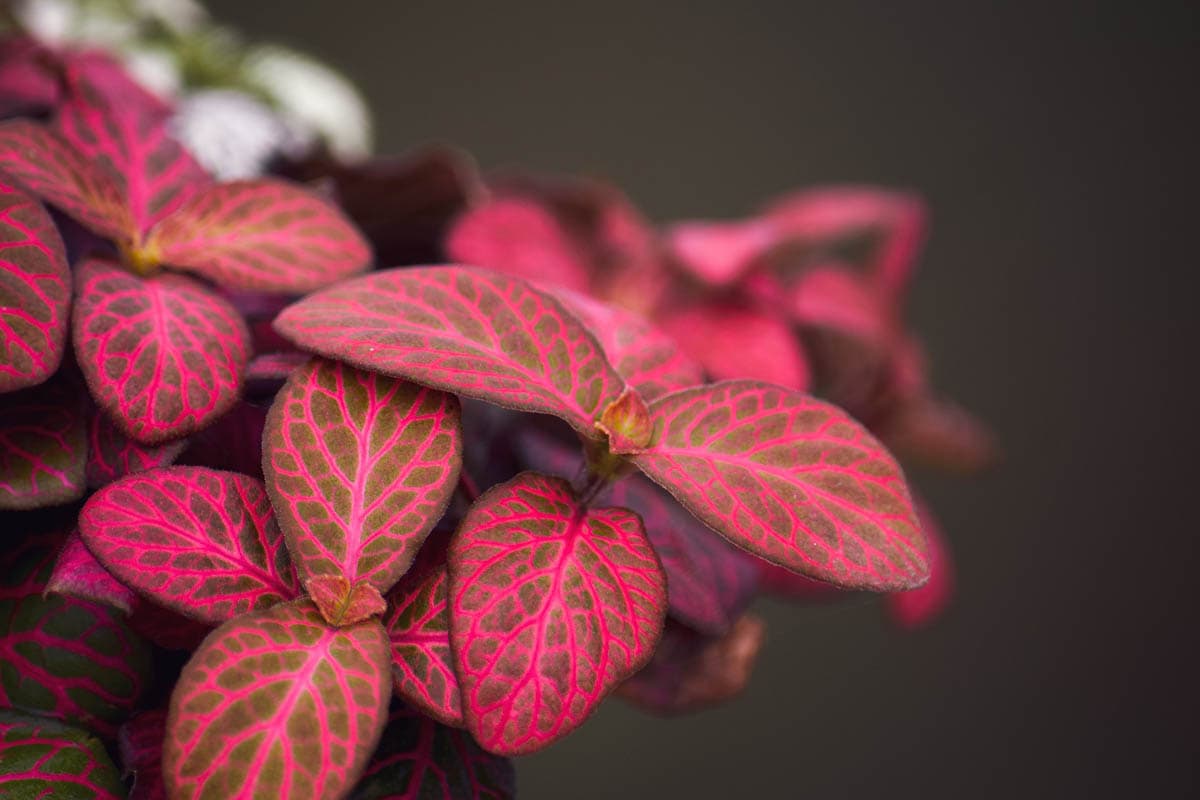
- About: A unique indoor plant native to Colombia, Peru, Bolivia, Ecuador and northern Brazil, known for its rich green leaves and brightly coloured veins.
- Scientific name: Fittonia albivenis
- Common name: Nerve plant, jewel plant, mosaic plant, painted net leaf
- Care: Prefers bright light, but will tolerate shade. Water when dry, but allow to dry out between waterings.
Hoya

- About: Also known as Wax Plant, Hoya is an easy to grow perennial evergreen with 200 – 300 species popular for its fragrant, star-shaped flowers. The plant is native to India, China, Thailand, Malaysia, Vietnam, and Indonesia.
- Scientific name: Hoya spp.
- Common names: Wax plant, wax climber, Hindu rope plant
- Care: Plant in well-draining soil and keep moist in the warmer months, allow the soil to dry out in winter. Hoyas like to be in a bright location, but out of direct sunlight. Be careful not to pot the plant up; hoyas like to be root-bound.
Schlumbergera

- About: Native to the south Americas, particularly Brazil, Schlumbergera is a small genus of cacti with 6-9 species that is popular for its stunning flowers during Christmas and Easter.
- Scientific name: Schlumbergera spp.
- Other names: Easter cactus, crab cactus, Thanksgiving cactus, holiday cactus, Christmas cactus
- Care: Grow in bright light but avoid direct sunlight which will burn the leaves. Schlumbergera cactus likes to be kept slightly moist during its active growing period but allow the soil to almost dry out between waterings.
Aspidistra
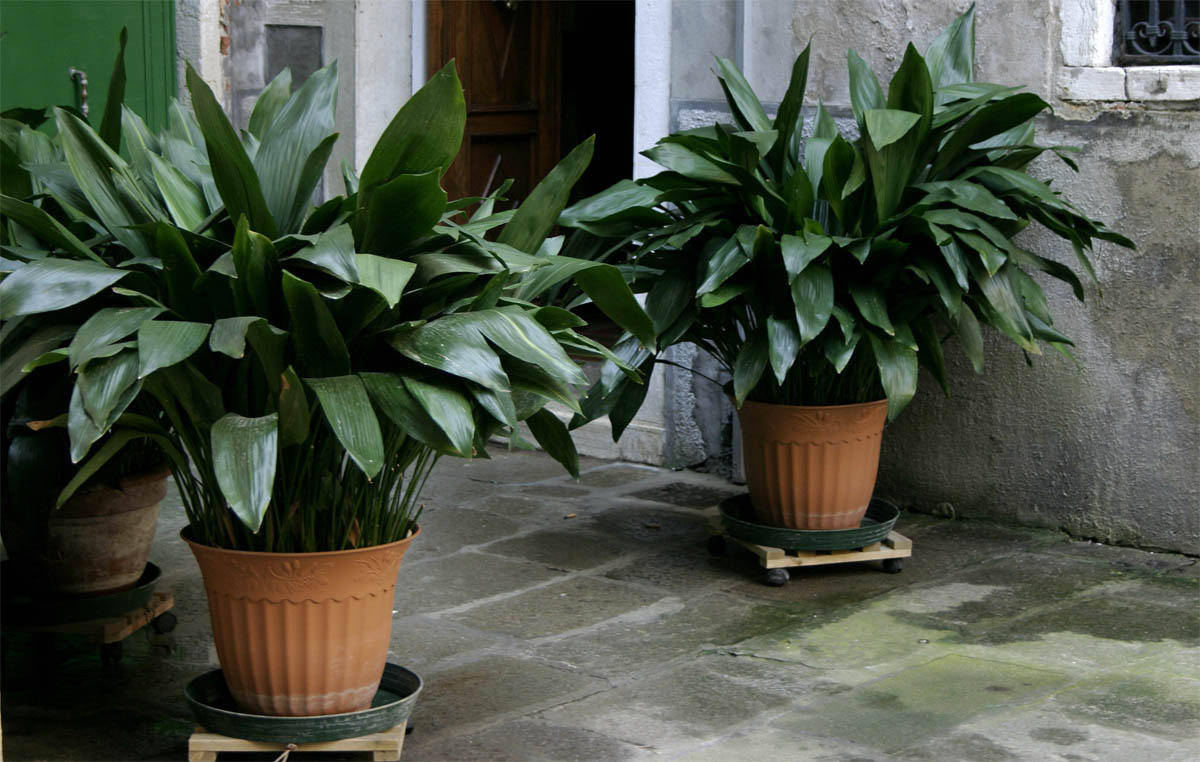
Image Tom Britt, Flickr
- About: Aspidistra is a shade loving plant native to Japan. Lush green leaves provide a showy and easy to care for indoor plant.
- Scientific name: Aspidistra elatior
- Other names: Cast iron plant, barroom plant, iron plant, haran plant, baran plant
- Care: Prefers areas of low light, likes moist but well-drained soil. Avoid direct sunlight which will burn the leaves.
Howea

- About: A slow-growing, showy and easy to care for plant, native to Lord Howe Island, off eastern Australia. In the wild, the Kentia palm can grow up to 10 metres tall.
- Scientific name: Howea forsteriana
- Other names: Kentia palm
- Care: Howea likes moist soil, but not saturated and bright but not direct sunlight.
Adiantum

- About: A beautiful and delicate fern with light green fronds and can grow up to 1 metre in height. The maidenhair fern can be a challenge to grow (for me at least).
- Scientific name: Adiantum spp.
- Other names: Maidenhair fern, walking fern
- Care: The maidenhair fern likes a brightly lit position but out of drafts, keep the soil moist at all times.
Nephrolepis

- About: A large and showy fern that is popular in hanging baskets. The Boston fern is native to Florida, West Indies, Mexico, Central America, South America, Polynesia and Africa.
- Scientific name: Nephrolepis exaltata
- Other names: Boston fern, sword fern
- Care: The Boston fern likes a well lit, protected position with high humidity. Water regularly to ensure the soil is moist but not saturated.
Bambusoideae

- About: A hardy and extremely easy to care for perennial evergreen plant which makes a great indoor or outdoor plant. There are over 1,000 species of bamboo which can range in size from several inches to over 30 metres.
- Scientific name: Bambusoideae spp.
- Other names: Bamboo
- Care: Bamboo likes to grow in well-drained soil, allow the soil to dry out between watering.
Chlorophytum

- About: A popular plant with which forms arching clumps. The spider plant is one of the easiest plants to grow and is tolerant of many conditions.
- Scientific name: Chlorophytum comosum
- Common names: Spider plant, ribbon plant, airplane plant, bracket plant, spider ivy, hen and chickens
- Care: Choose well-drained soil, and grow in indirect light with moderate humidity. Water when the top inch of soil is dry. The spider plant is very forgiving and is ideal for the novice. Arching clumps can be cut and planted to grow additional plants.
Neoregelia

- About: The bromeliad is a colourful plant that produces showy flowers on a spike. Native to the tropical Americas, there are over 3,000 species.
- Scientific name: Neoregalia spp.
- Common name: Bromeliad
- Care: Bromeliads thrive in a moist (but not soggy) and humid environment and prefer bright, but not direct sunlight.
Calathea
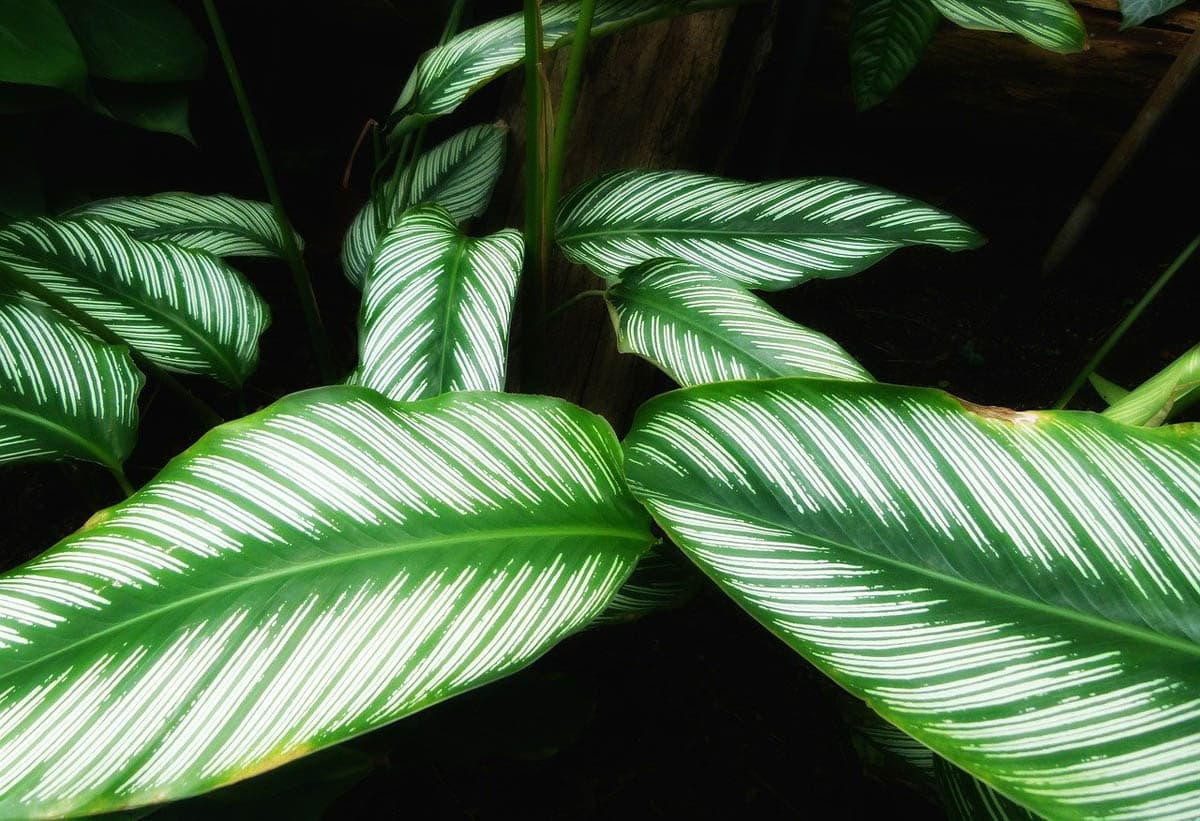
- About: A beautiful indoor plant with showy patterned leaves on long stalks native to Brazil. There are several dozen species of Calathea.
- Scientific name: Calathea spp.
- Common name: Prayer plant, rattlesnake plant, red-veined prayer, zebra plant, peacock plant, maranta, cathedral plant
- Care: Grow in shady or dappled light with high humidity. Calathea like soil that holds its moisture but is well-draining to prevent the roots from rotting. Keep the soil moist but not wet.
Beaucarnea
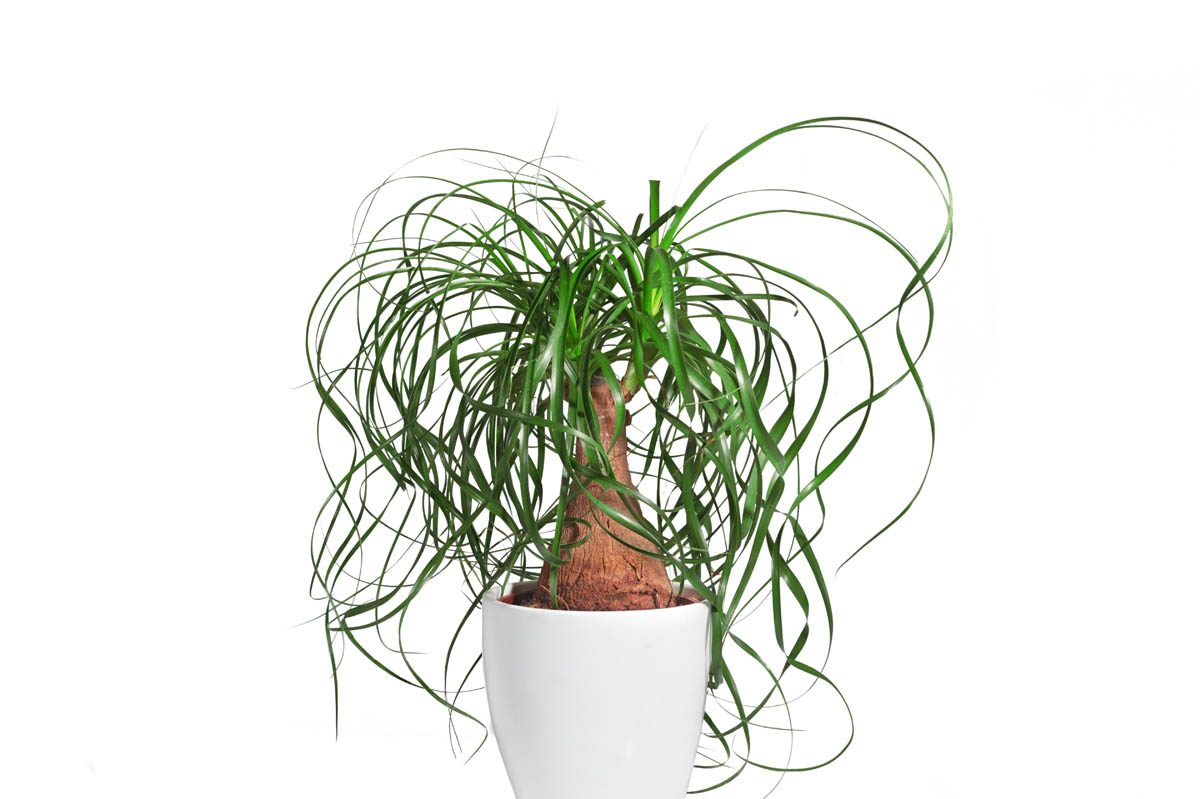
- About: A unique and easy to care for plant native to eastern Mexico. Despite its name, it is not a true palm.
- Scientific name: Beaucarnea recurvata
- Common name: Ponytail palm, bottle palm tree, elephant foot tree
- Care: The ponytail palm is an exceptionally hardy plant. It likes a well-drained soil, bright light, and a warm position. Allow the soil to dry out between watering.
Dypsis lutescens

- About: A showy flowering species of palm native to Madagascar. Outdoors, the palm can grow as tall as 6 – 12 metres, indoor palms are usually 4-5 feet tall.
- Scientific name: Dypsis lutescens
- Common name: Golden cane palm, areca palm, yellow palm, golden butterfly palm, golden feather palm butterfly palm
- Care: The golden cane likes well-drained soil and a light position out of direct sunlight. Keep soil moist, but not soaking. Do not allow the soil to dry out between watering.
Haworthiopsis attenuata

- About: A stunning, low maintenance succulent with more than 70 species, Haworthia
- Scientific name: Haworthiopsis attenuata
- Other names: Zebra plant, pearly dots
- Care: As with most succulents, the zebra cactus likes well-drained soil. Allow the soil to dry out between watering. Grow in bright, but not direct sunlight.
Tillandsia

- About: An unusual plant of around 650 species which are native to northern Mexico and the southern United States. Tillandsias obtain water and nutrients through their leaves.
- Scientific name: Tillandsia
- Other names: Air plant
- Care: Use a spray bottle to mist the air plant 2-3 times a week and submerge the plant in water for 1-2 hours weekly. Place in bright but filtered light away from drafts.
Dionaea muscipula
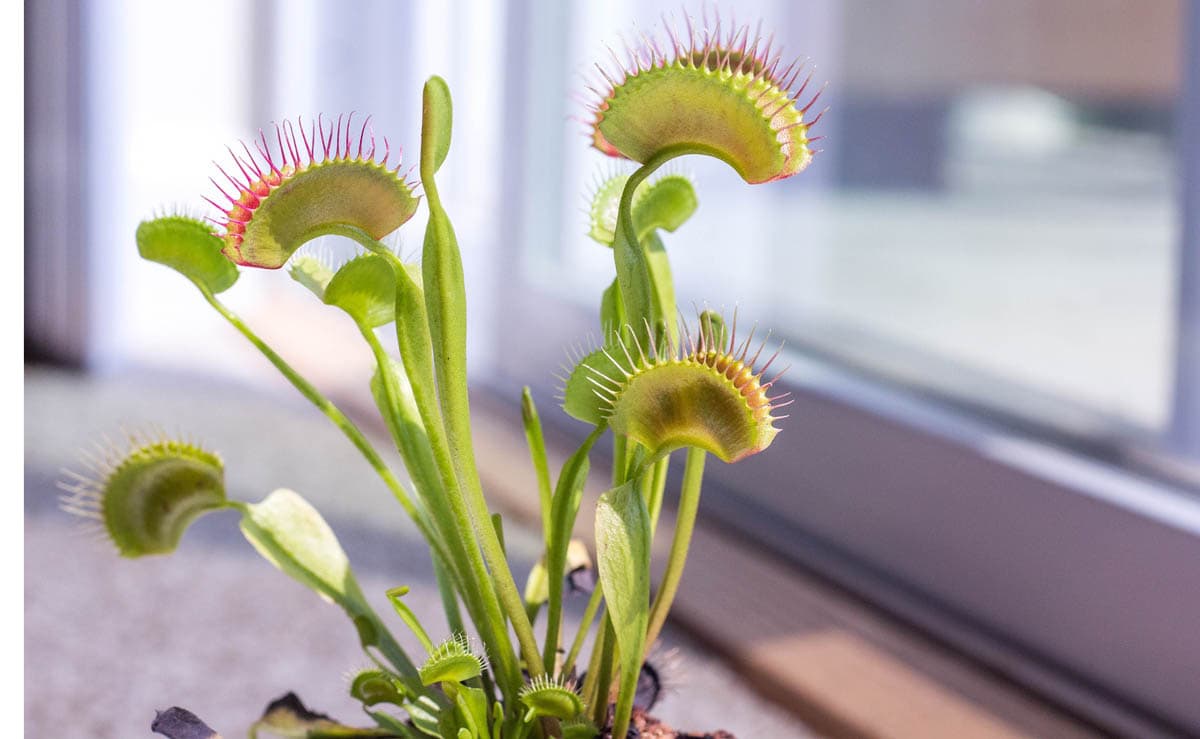
- About: A unique carnivorous (meat-eating) plant with leaves that snap shut when an insect lands on them. Dionaea muscipula is native to native to boggy areas on the East Coast of the United States.
- Scientific name: Dionaea muscipula
- Common name: Venus flytrap
- Care: Grow in moist, acidic soil in full sun. Use distilled water as tap water is too acidic. Keep out of drafts and avoid touching the fly traps.
Pilea

- About: A showy member of the nettle family with between 600 – 700 species. This flowering plant distributed throughout the tropics, subtropics, and warm temperate regions.
- Scientific name: Pilea spp.
- Other names: Common species include silver sprinkles, artillery plant, gunpowder plant, moon valley plant, friendship plant, aluminium plant, watermelon pilea.
- Care: Grow in bright but indirect light; keep the soil moist but not saturated.
Sedum

- About: An interesting, easy to care for succulent with long, hanging stems which can reach up to 1 m in length.
- Scientific name: Sedum morganianum
- Other names: Burro’s tail, horse’s tail, donkey’s tail, lamb’s tail, stonecrop
- Care: Grow in bright light in well-drained soil. Keep moist, but avoid saturating the plant. Too much water will cause the stems to rot.
Related: Full list of plants non-toxic to cats
Click image for full sized QR code
Click image for full sized QR code


